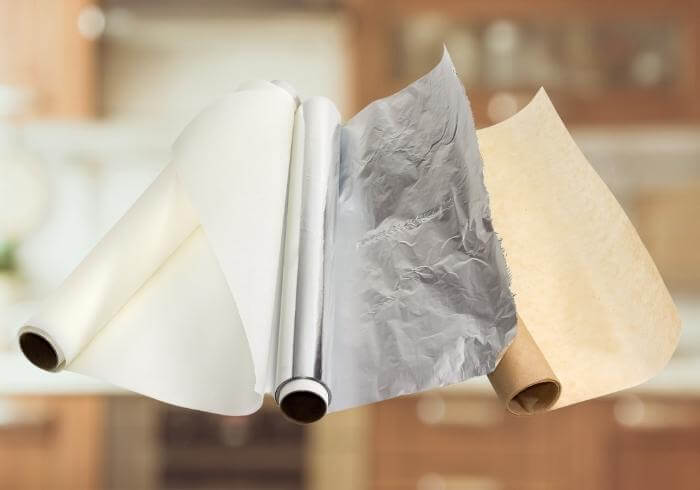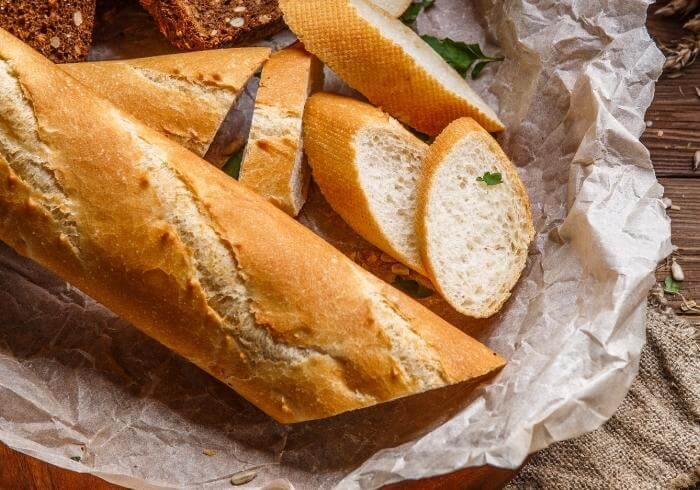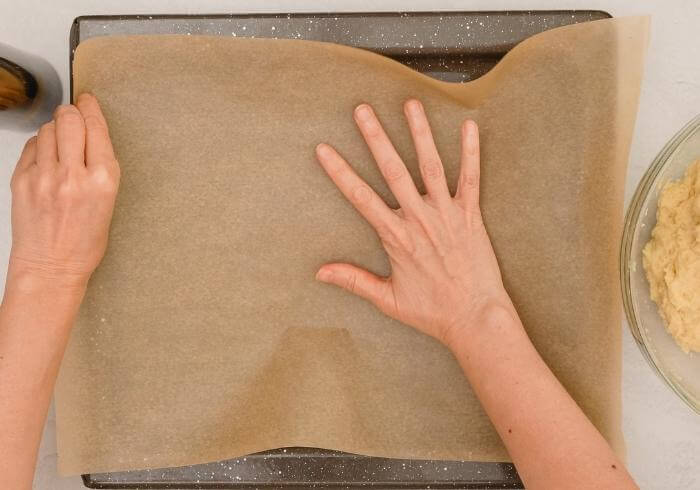Fresh bread smells wonderful, easy to make, and can serve as a vessel for an infinite variety of dishes. However, bread has a habit of quickly becoming stale and is either tossed away or used for toast.
Store-bought, homemade, sliced or whole, all it takes is a bit of time and exposure for it to get hard, stale, and pretty much unpleasant. You might even end up with moldy bread!

In this article, I will explain how to keep your bread fresh in a scenario-based formula that likely speaks more to your life and how you actually use your bread.
Where to Store Bread in the Kitchen
Air is the enemy of freshness, but it’s actually also a chemical reaction at play that makes your bread go stale. Once air, which contains a ton of bacteria, touches the bread, it begins to rot. The initial stages of going bad show as drier, harder, stale bread we all know and hate.
This is why many people opt for keeping their bread in places that don’t have a lot of air. Bread boxes, for instance, are ideal spaces for bread. They’re dark, they don’t let in excess air, and they stay about room temperature.
Hold these same principles true for other locations. A smaller shelf in a cabinet, maybe a counter drawer that has just enough room, somewhere that air and space are not creating an environment conducive to the bacteria.
The most important tip that you can implement in the proper storage of any bread: Make sure it’s wrapped up well and has no air inside of the storage bag! Keep the air far, far away from the bread!
The Best Ways to Store Homemade Bread
Many people opt for making their bread homemade, either through bread machines or hand kneading. This is because some think it’s healthier, cheaper, and actually tastier.

Regardless, you will want your bread to stay fresh. Here are some steps to implement.
- Seal it up Quickly: As soon as your bread cools down, don’t leave it out on the counter for dinner or for guests, etc. Seal it up as quickly as you can. A stale piece can create a chain reaction, so wrap your bread up. Go with a plastic bag of some sort that allows you to remove the air. Get rid of the air surrounding it.
- Never, Ever Slice: The best tip we can give you is that you should always slice your bread to order, never beforehand. That’s not to say store-bought sliced bread is bad; however, with homemade bread, keep the loaf whole. This means exponentially less air is getting in, as every slice creates a crazy amount of surface area that air can get to. So keep the loaf whole to keep it fresh.
- Cool, Dry Storage: Storage places too cold can create the chemical reaction we spoke about above, though warmer areas create humidity and a lot more bacteria, mold spores, and other nasty stuff. Get yourself a bread box if you can. It’s worth the investment for homemade bread lovers. In lieu of that, find yourself a dark, dry, cool, small space to nestle the wrapped loaf away from light, heat, moisture and excess air.
How to Store Sliced Bread
Sliced bread is affordable, and a lot of brands make pretty tasty stuff. Not to mention, it’s just incredibly convenient.
However, every single slice has a whole lot of surface area that’s open to the air, so it’s tough to keep fresh. Here are some steps you can take.
- Buy Right: While still at the store, gently squeeze the bread, check the date, try to get there as the bread delivery is arriving. When you start by buying as fresh as possible, you’re extending the life. Also, paying the extra dollar for the high-quality brand means you’re getting a denser product of higher quality, not something that’s overly airy. Feel the heft of the loaves per brand to understand this.
- Store It Properly: Having a bread box at home, or a place you can tuck the bread away is a great way to keep it stored. However, this also means not leaving your bread open after you make a sandwich, or just loosely closing the bag. Squeeze the air out and twist that plastic around like a madman to create a seal! Keep the air out to keep the bread fresh.
- Buy/Use Per Scale: One thing you will notice about sliced bread is that there are different sizes of loaves. Some are long, and some are short. Make sure you’re buying bread per your needs.
Have a big family that loves sandwiches? You’ll go through a big loaf and not have to worry about staleness as much if you’re wrapping and storing. Conversely, this loaf might go to waste if you’ve living single. So remember to purchase bread per your needs.
How To Make Bread Last Longer?
When it comes to making your bread last longer, what you’re looking for is to keep it fresh. The steps we talked about above go a long way to accomplishing this.
Keeping air away from your bread keeps it fresh longer.
Flour is incredibly porous. It will absorb the air and thus the odors, bacteria, and more. This creates a rot, which starts out as staleness and culminates as mold.
SEE ALSO: Does Flour Go Bad?
Please, just make sure that you’re always keeping a tight seal on the bread, getting the air out of the bag.
If you have a homemade loaf or purchase a whole loaf at the store, never slice it until you’re ready to make something with it.
This way, if it is a tad bit stale, slice a thin bit off the end, and the rest is good to go.
Keeping your bread colder will also keep it fresher for longer, which we’ll speak about below.
Does Refrigerating Bread Make It Last Longer?
There’s a common misconception that refrigerating bread keeps it fresher for longer. This idea was probably born of the idea that keeping it in a cool, dark place helps keep it fresher.
So, of course, going even cooler and even darker is all the better, right?
Not exactly. According to experts in the field, your bread is going to go stale six-times faster if it’s refrigerated. Retrogradation affects the starch molecules and actually crystallizes them, causing staleness.
So what you’re aiming for here in terms of proper bread storage is a cool temperature, not a cold temperature. Keep that in mind the next time you’re thinking about storing a loaf back in the fridge.
In Summary
Keeping your bread fresh isn’t an arduous task at all. Just be sure you’re not slicing your loaves while keeping them away from the air as much as possible.
For sliced bread, really seal the bag well, getting the air out, and store in a cool, dry place.
Following these few steps may ensure that your bread stays fresher for much longer.











